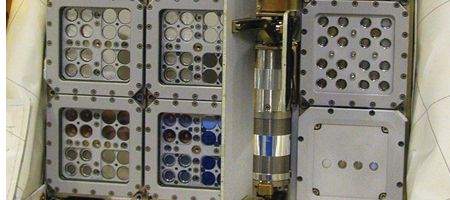An experiment carried out on the Internatonal Space Station has shown that lichen can survive in outer space – lending support to the ‘panspermia’ theory that life arrived here from elsewhere.

In 2008, scientists sent the suitcase-sized Expose-E package to the Space Station filled with organic compounds and living organisms to test their reaction to outer space. It returned to Earth in 2009.
Unlike astronauts on a spacewalk, who wear carefully-designed protective suits, the bacteria, seeds, lichen and algae attached to the outside of the Space Station were given no protection whatsoever.
“We are exploring the limits of life,” says René Demets of the European Space Agency.
While the samples were insulated from the sun’s rays to a small degree by the Space Station itself, they still had to cope with temperatures changing from -12ºC to +40ºC over 200 times as they orbited Earth.
Nevertheless, some survived, with certain lichen species continuing to grow normally when the rrived back on Earth.
“These organisms go into a dormant state waiting for better conditions to arrive,” says Demets.
The findings support the idea of panspermia, showing that it could be possible for organisms to colonize planets by hitching rides on asteroids. ESA plans to test this theory further, by sending different samples on future ISS missions.
But the research isn’t important to space scientists. ESA says that cosmetic companies, too, are interested: if the lichen can survive the full power of the sun for 18 months, they could lead to new ingredients for sunscreen.






